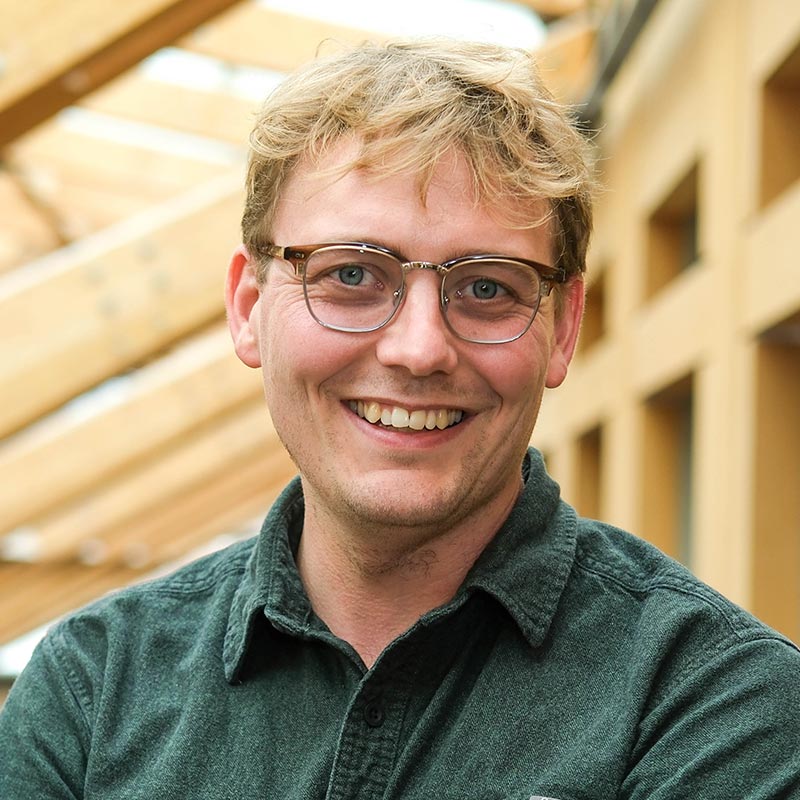Tzeng Yih Lam joins the UBC Faculty of Forestry as an Assistant Professor of Forest Measurements in the Department of Forest Resources Management. His research interests are tree measurement, forest sampling, and quantitative silviculture.
Tell us about yourself and your background!

I select and measure trees, and make sense of what I measure. It involves probability, math, and statistics. I was trained as a forester at the University of New Brunswick (Canada). I received my Master’s from the University of Göttingen (Germany) and completed my PhD at the Oregon State University (USA). Before coming to UBC, I was an Associate Professor of Forest Mensuration at the National Taiwan University. I have also worked in an NGO and consulted for UN projects. Outside of work, I like reading, walking, rock climbing, and playing video games.
What drew you to your work?
Growing up in the age of Star Trek and Star Wars in a big city, I dreamt of building robots and going to space. At least until I went on my first camping trip in high school. I realized that the final frontier for me was the forests. What drew me to forest measurement and sampling in the first place was the (deceptively) absurd notion of managing forests with information only from an infinitesimal fraction of measured trees. So, I thought that there must be a reasonable and defensible way of doing that, which I found to be probability sampling. Measuring trees is fun because I get to work in the field. I also like the geometry that goes into tree measurements.
What also fascinates me is finding patterns in data and transcribing high-dimensional forest dynamics into models that we can process and visualize. Eventually, it is the continuous challenges of trying to make the most out of every penny spent on measuring trees on the ground that drives my passion for forest measurements.
What do you hope to achieve through your work here at UBC?
Forest measurement is one of the foundations of forest management. One cannot really manage what is unknown to us. There are still many tree attributes that we do not have efficient methods to measure. I hope to combine geometrical models and consumer-grade products to build easily accessible tools. Resources are always limited for ground inventory. There is still much work to push the limits of variable probability sampling to design cost-effective forest inventory. It is important to understand the trade-offs between costs, sampling, and management decisions. Lastly, I hope to build the next generation of forest mensurationists who appreciate math and are imaginative, critical, and cooperative. They will have the skill sets to continue solving urgent problems facing our society in the present and the future.
What attracted you to UBC and UBC Forestry?
UBC is incredibly diverse. I strongly believe in this diversity because it leads to innovations needed to solve our most pressing issues (sounds like adventures in Star Trek?). I very much look forward to being part of this diversity. UBC Forestry always has very strong forest biometrics and silviculture programs. These programs have produced many world-class leaders in research and industry. The programs also attract many potential students with strong quantitative skills. Thus, I like the challenge of keeping the biometrics program strong in the coming years. There are also many biometricians and silviculturists in this region. Being in UBC Forestry offers many opportunities to interact with them over a good cup of coffee.
In addition to research, what are you most looking forward to in the Faculty of Forestry?
Being trained as a traditional forester and having previously worked as a supply chain analyst, I always view forestry as a system of many integrated components such as social, wildlife, harvesting, and wood products. The Faculty of Forestry has every component in place. I look forward to sharing ideas with colleagues from different departments working on various topics. Being in the Faculty of Forestry also allows me to connect with forest industries. Forest industries have direct impacts on the ground. I am always interested in creating partnerships with forest industries so that my research may be of use to them.
Any other information you’d like to share?
One of my favourite books is “Infinitesimal: How a Dangerous Mathematical Theory Shaped the Modern World” (Amir Alexander, 2015). We almost lost the ability to land on the moon. However, a good idea will transcend space, time, and culture.






